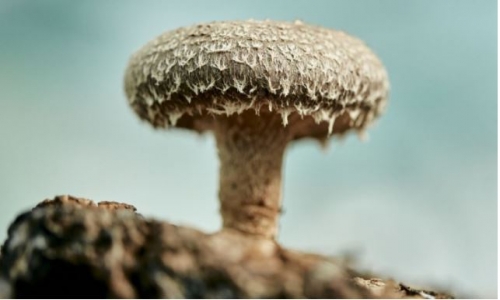


 11:50:34
11:50:34  2025-01-11
2025-01-11  1083
1083

Botanists discovered a new lipstick vine species, Aeschynanthus pentatrichomatus, in the Philippine rainforest. Found during a 2022 expedition, the plant is critically endangered and underscores the need for conservation in biodiversity hotspots.
Scientists have announced the discovery of a previously unknown species of lipstick vine, uncovered in the depths of the Philippine rainforest. The groundbreaking findings were published in the Nordic Journal of Botany.
A team of botanists from Oxford University and the University of the Philippines Los Baños made the discovery during a 2022 expedition to the remote Barangay Balbalasang rainforest on Luzon Island. Accessing this nearly impenetrable wilderness required several days of travel and the use of machetes to clear a path. During their exploration, the team was hosted by the Banao Tribe, an indigenous community who protect their local forest.
A Unique Botanical Discovery
Examining the material, they collected from the trips, botanists Jayson Mansibang, Adriane Tobias, Pastor Malabrigo Jr (University of the Philippines Los Baños), and Dr. Chris Thorogood (Deputy Director and Head of Science for Oxford Botanic Garden and Arboretum and lecturer at Oxford University’s Department of Biology) realized they had stumbled upon a specimen unlike any related type of lipstick vine known to date. In particular, the plant’s flowers have a distinct pattern of delicate purple mottling, similar to that of a European foxglove.
Dr. Chris Thorogood said, “We were trekking through dense vegetation when suddenly we spotted a luminous white, purple-spotted flower dangling above our heads. We suspected immediately that it was new to science. It’s so exciting that beautiful species like this are still there waiting to be described.”
Together, the scientists named the plant Aeschynanthus pentatrichomatus from the Latin ‘penta’ meaning five and ‘trichomatus’ referring to the trichomes – hair-like outgrowths deep in the throats of the flowers.
Lipstick vines (genus Aeschynanthus) comprise around 180 tropical and subtropical species which are named for the tubular appearance of the developing buds as they emerge. They typically grow as vines on other plants and trees, and have brightly coloured flowers that are pollinated by birds.
A Call for Conservation
The new species has already been assessed as Critically Endangered, since the population is at high risk of total forest destruction due to the growing intensity of typhoons caused by climate change. The Barangay Balbalasang rainforest is remarkably intact and hosts a high number of species not found anywhere else in the world. The researchers hope that the new discovery can help support conservation efforts to protect the region.
Adriane Tobias said: “We dedicate this discovery not only to the unique beauty of the Banao forest but also to the Banao People themselves, who, through their care and stewardship, have ensured the conservation of rare species within these precious forests. It’s rare to find Aeschynanthus in such an environment, and as young botanists, we were thrilled to discover something so distinct.”
Dr. Thorogood added: “Many new species remain undocumented in the world’s ‘plant data darkspots’ – up to 15% of the world’s flora in fact. Finding these ‘known unknowns’ is essential for understanding and protecting biodiversity. That’s what makes discoveries such as this one so important for conservation science.”
Reality Of Islam |
|

This is the

A computer

Auburn Univ

Poisoning i
 9:3:43
9:3:43
 2018-11-05
2018-11-05
10 benefits of Marriage in Islam
 7:5:22
7:5:22
 2019-04-08
2019-04-08
benefits of reciting surat yunus, hud &
 9:45:7
9:45:7
 2018-12-24
2018-12-24
advantages & disadvantages of divorce
 11:35:12
11:35:12
 2018-06-10
2018-06-10
 6:0:51
6:0:51
 2018-10-16
2018-10-16
 9:30:2
9:30:2
 2021-11-12
2021-11-12
 2:34:48
2:34:48
 2022-01-18
2022-01-18
a hero waters thirsty wild animals
 9:4:9
9:4:9
 2022-01-06
2022-01-06
 4:25:57
4:25:57
 2023-02-11
2023-02-11
 2:2:13
2:2:13
 2022-10-08
2022-10-08
 8:21:9
8:21:9
 2018-06-21
2018-06-21
 2:42:26
2:42:26
 2023-02-02
2023-02-02
 5:41:46
5:41:46
 2023-03-18
2023-03-18
| LATEST |